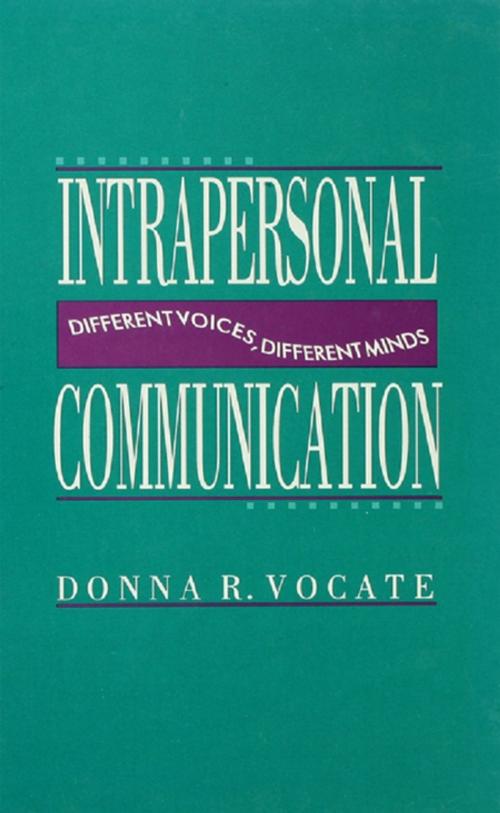Intrapersonal Communication
Different Voices, Different Minds
Nonfiction, Reference & Language, Language Arts, Communication| Author: | ISBN: | 9781136601842 | |
| Publisher: | Taylor and Francis | Publication: | December 6, 2012 |
| Imprint: | Routledge | Language: | English |
| Author: | |
| ISBN: | 9781136601842 |
| Publisher: | Taylor and Francis |
| Publication: | December 6, 2012 |
| Imprint: | Routledge |
| Language: | English |
Intrapersonal communication is a relatively new phenomenon for communication study and still lacks the grounding of a sound theoretical base. The first to present a developed theory of this discipline, this book's goal is to provide graduate students and professionals with an organized point of departure for their research.
The theoretical section begins with an intrapersonal communication theory derived from the sociogenetic views of George Herbert Mead and L.S. Vygotsky. This theory emphasizes social interaction, the developmental nature of mind, and the crucial role of speech in creating a self, a culture, and a mind which then interact in human intrapersonal communication. This section also provides the reader with a coherent interdisciplinary knowledge base taken from speech communication, biology, neurology, cultural psychology, anthropology, sociology, speech pathology, and linguistics. The integrated theoretical perspective that results makes the study compatible with communication scholarship focusing on the social, cultural, cognitive, or performance aspects of communication phenomena.
The applications section examines neurophysiological/intrapersonal communication research methods and studies to date, together with specific applications of intrapersonal communication theory to childhood language acquisition, to the establishment of gender identities, and to intrapersonal competence. The final chapter presents pedagogical guidance on how we can influence intrapersonal competence and performance as well as commenting on the current state of this study and its future prospects. The editor's interstitial commentary facilitates access by readers wishing to constuct their own theory.
Intrapersonal communication is a relatively new phenomenon for communication study and still lacks the grounding of a sound theoretical base. The first to present a developed theory of this discipline, this book's goal is to provide graduate students and professionals with an organized point of departure for their research.
The theoretical section begins with an intrapersonal communication theory derived from the sociogenetic views of George Herbert Mead and L.S. Vygotsky. This theory emphasizes social interaction, the developmental nature of mind, and the crucial role of speech in creating a self, a culture, and a mind which then interact in human intrapersonal communication. This section also provides the reader with a coherent interdisciplinary knowledge base taken from speech communication, biology, neurology, cultural psychology, anthropology, sociology, speech pathology, and linguistics. The integrated theoretical perspective that results makes the study compatible with communication scholarship focusing on the social, cultural, cognitive, or performance aspects of communication phenomena.
The applications section examines neurophysiological/intrapersonal communication research methods and studies to date, together with specific applications of intrapersonal communication theory to childhood language acquisition, to the establishment of gender identities, and to intrapersonal competence. The final chapter presents pedagogical guidance on how we can influence intrapersonal competence and performance as well as commenting on the current state of this study and its future prospects. The editor's interstitial commentary facilitates access by readers wishing to constuct their own theory.















